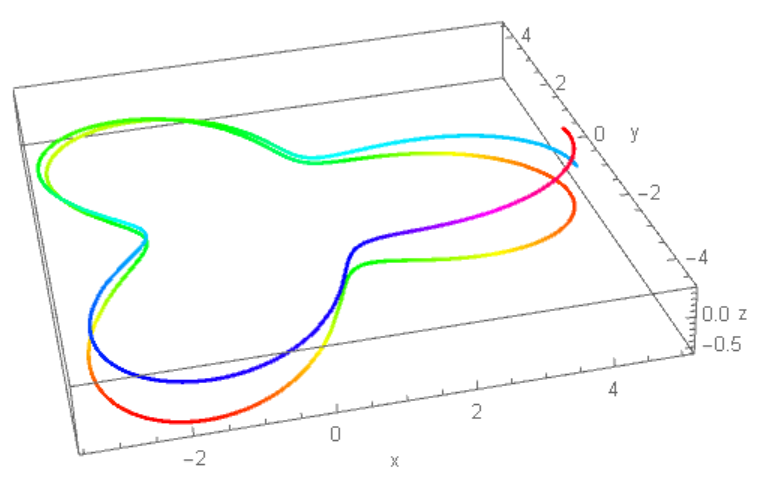I have got a system of differential equations. The system has $4$ variables. I am trying to plot trajectory of a particle outside a Kerr Black Hole. I have used Mathematica to calculate all the $4$ differential equation and now I am using NDSolve to calculate the trajectory numerically. The code is
kerr = NDSolve[{
eqnr[s] == 0, eqnt[s] == 0, eqnϕ[s] == 0, eqnθ[s] == 0,
r[0] == 5, θ[0] == Pi/Pi^2, t[0] == 0, ϕ[0] == 0,
r'[0] == 0.01, θ'[0] == 0.003,
t'[0] == 0.01, ϕ'[0] == 0.003
},
{r, θ, ϕ, t}, {s, 0, 2}]
Initial conditions are randomly set. What this code gives as output are 4 arrays of coordinate $r$, $\theta$, $\phi$ and $t$. Now I want to covert this output from cartesian to spherical coordinate system. I know there is a command for doing such a thing but that will not be helpful here as to use that I need to extract the array computed by NDSolve and then insert into the function and then plot the parametric plot.
So my questions are: (i) Is there a direct way to do that? (ii) else how can I extract the computed array of coordinates? (The array that are outputted is shown as in the attached image)



radial,time,phi, andthetaare undefined and seemingly not related to the system of ODE. Actually, there are no ODEs at all. $\endgroup$NDSolveValuerather thanNDSolve$\endgroup$